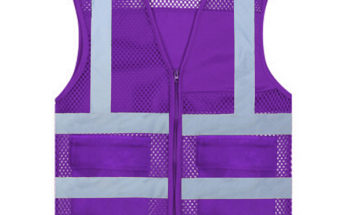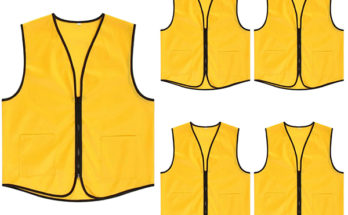This coronavirus pandemic has taken the world to its knees. Everyone is telling us to take safety measures like staying inside, washing hands, and avoid touching the face. COVID-19 is a respiratory virus that’s why wearing a mask can help us to prevent it to some extent. Some may say, facemasks are not effective against this epidemic but they can be your last resort when no protective equipment is available. After observing steep growth in COVID-19 patients,The Centers for Disease Control and Prevention recently urges people to use facemasks, especially in public or gathering places to flatten the curve. Don’t forget to take CDC messages about the importance of social distancing, self-quarantine, and basic hygiene.
N95 masks that can help to protect effectively against viruses are facing a shortage. Major stores and online marketplaces have stopped selling them to the public so that they can keep the supply flowing towards medical professionals like doctors, nurses or anyone working at the frontline. That’s where homemade masks come in to help. Although they may not be effective, still they can help us to take extra protective measures in these chaotic circumstances.
There are some benefits to wearing masks:
• You can get the flu virus other than COVID-19 as well.
• Protection against dust.
• Protection against seasonal respiratory allergies.
• You can protect others from yourself if you are infected.
Plus, homemade masks can be made in various styles and patterns. You can easily adjust the size of masks according to your needs. You will need certain materials, some of them can be found at home and you have to buy others. Obviously, you cannot go outside without sharing the major risk of getting affected, so it’s better to order DIY facemask materials online.
What Kind of Materials You Need?
• To make DIY face masks at home, you will require these supplies.
• A sewing machine or sewing kit
• A breathable nonporous material, which will go in between fabric)
• Elastic
• Cotton Fabric
• Filter material, which can be added to block smaller particles. Coffee filters or paper filters can also be used.
Step-By-Step Guide:
Step # 1: These are the patterns you can follow while cutting your fabric.
Step # 2: Cut your fabric into pieces, place it on the fold. You can do this out of the cotton fabric.
Step # 3: Use an iron to apply fusible interfacing to the opposite side (Wrong Side) of material.
Step # 4: Along the eight-inch side, you will sew using ¼” seam allowance. Leave the 3-inch space in the center. It will help to turn the mask right side out.
Step # 5: Now, use the elastic and cut it into two pieces. Every piece should be 7 inches long. Insert these pieces into the open ends present at two corners and pin into place. After this, you should sew across sides and do the backstitching over the elastic. This way you will secure the elastic in place.
Step # 6: To press seams flat, you should turn the mask right side out.
Step # 7: On each side, fold up 3 pleats. You can follow the given pattern. You put the pin in place and make sure pleats are folded in the same direction.
Step # 8: Last, you should topstitch the mask completely. It will secure the pleats and close any opening present.
Some tricks you can follow:
• Non-woven, light-medium weight interfacing can be most appropriate for these kinds of projects.
• You can also use 4-16” fabric ties instead of elastic ones at the corners.
After completing and finishing your DIY homemade mask, the first thing you should do is to sterilize it. You can use the washing machine or hot boiling water for this purpose. After washing, leave the facemask to dry in air preferably in sunlight.
What To Do If Elastic Straps Troubles You?
You may suffer from elastic straps if they start to rub your ears painfully. You can do to avoid this situation is to make a headband with buttons. Facemask elastic straps will go around the buttons making them more comfortable to wear.
What else you can do is to use the S ring hook. You can attach the strap and place them around each U of the ring. Whenever you wear the mask, the S ring will be located on the back of your head, making your mask fitter around your face area. You can also snug the straps with the help of the ring.
How to Get DIY Face Masks Materials By Staying At Home?
All of these materials you can get by staying at home without risking the life of yours and your loved one. All you have to do is to visit the Open tip website: www.opentip.com.
You can place an order and they will facilitate you at your doorstep by practicing all safety measures necessary. They can be the best option if you need a healthcare product supplier as well.
While CDC has recommended everyone to wear face-coverings during this pandemic in public, it’s still an option. Some cities are also implementing policies to make sure their residents are doing body covering when they go outside. Some city officials have implemented the fine in case of any resident of not following these necessary protective measures. The Pentagon has also jumped in to issue a mandate for everyone at the Defense Department to cover faces and hands while doing meetings or official meet-ups. To know about these policies, you should check with your local government to avoid any fine.
Note: This article is written to provide you education and information to ease your troubles in this chaotic situation. It is not, by all means, any health professional advice. Let’s make one thing clear again, these homemade masks are not intended to protect the user but to save against unintended transmission of germs. You should take necessary precautions with them to make their use effective. It’s better to consult with your doctor or health provider if you have any questions regarding any medical condition or health objectives.


